home | about | documents | news | publications | FOIA | research | employment | search | donate | mailing list
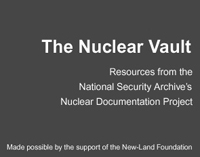
ARTICLES AND REVIEWS
Hydrogen Bomb Physicist's Book Runs Afoul of Energy Department
William J. Broad, The New York Times,
March 23, 2015
H-bomb headaches
Alex Wellerstein, article and review, Restricted Data Nuclear Secrecy Blog,
March 27, 2015
Building the H Bomb: A Personal History
By Robert Schaefer, review, New York Journal of Books
Spring, 2015
Does Philly author reveal nuclear-bomb secrets?
John Moritz, article, Philadelphia Inquirer
April 6, 2015
Behind the making of a super bomb
Richard Rhodes, review, Washington Post
May 22, 2015
Building the H Bomb: A Personal History
Cameron Reed, review, Physics Today
July 2015, page 46
Looking back on the H-bomb
Richard Moore, review, Physics World
September 17, 2015
Special Collection: Key Documents on Nuclear Weapons Policy, 1945-1990
New Memoir by Participant in U.S. H-Bomb Program Sheds Light on the Making of the First Test Device
First-Hand Perspectives on Edward Teller and Other Leading Figures, and on Dispute over Who Originated Key Idea of Radiation Implosion
Book by Kenneth W. Ford Being Published Over Objections of Department of Energy
First Full Account of Project Matterhorn, Pioneering Effort in Use of Computer Technologies for Nuclear Weapons Development
National Security Archive Electronic Briefing Book No. 507
Posted - March 24, 2015
For more information contact:
Ken Ford 215/439-8568, kenneth.w.ford@gmail.com or
William Burr 202/994-7000, nsarchiv@gwu.edu
Washington, D.C., March 24, 2015 – A new scientific memoir by one of the few surviving participants in the U.S. H-bomb project provides fresh information and insights into the production of the world's first thermonuclear device. In an exclusive essay and selection of declassified documents provided to the National Security Archive and posted today on the Archive's website (www.nsarchive.org), the author, Dr. Kenneth W. Ford, brings to light intriguing pieces of the H-bomb's early history, including personal aspects such as the brittle relationship between physicists Edward Teller and Stanislaw Ulam and their feud over who came up with one of the central theories leading to the H-bomb's development.
Building the H Bomb, A Personal History (Singapore: World Scientific, 2015) describes a central element of the process — the Princeton University-based "Project Matterhorn" — where Ford and his colleagues used the latest computer technology to calculate the mid and late stages of a thermonuclear explosion, especially the burning of the nuclear fuel. The Matterhorn calculations were essential to the IVY MIKE thermonuclear test that caused the island of Elugelab — part of Enewetak atoll in the Marshall Islands — to disappear on 1 November 1952.
As William Broad reports in The New York Times yesterday, 23 March 2015, Dr. Ford is currently in a dispute with the Department of Energy concerning the latter's security review of Building the H Bomb. Ford emphasizes that he has scrubbed his book of nuclear weapons secrets and that any and all technical information he uses is from public sources. The DOE reviewers, however, declare that the book includes secret "Restricted Data." Believing otherwise, Dr. Ford argues that much of the public-record material that he uses comes from people who had "Q" clearances authorizing their access to nuclear weapons data. On the grounds that the DOE arguments are poorly founded, Ford has gone ahead with publication.
In the following presentation, Dr. Ford provides an overview of Building the H Bomb: A Personal History and highlights some of the key documents on the early history of the H-bomb program. Additional documents are presented in an annex to the posting.
* * *
Comments and Selected Documents related to the book
Building the H Bomb: A Personal History
Kenneth W. Ford
My book Building the H Bomb: A Personal History focuses on a two-and-a-half-year period, mid 1950 to late 1952, the period in which the H-bomb went from dubious to likely to certain. I was at that time a physics graduate student on leave from Princeton University, working as a junior member of the team that created the first thermonuclear explosion-specifically the Mike device that eradicated the island of Elugelab in Enewetak Atoll with a ten-megaton blast on November 1, 1952 (October 31 in the United States).
* * * * *
How did I get involved? It was 1950, just five years after the end of World War II. I was 24. Most American physicists older than I had contributed to the war effort in one way or another, many of them in the Manhattan Project. Very few had any inclination to return to "war work." They felt that they had already done their bit, or that their postwar pursuits of teaching and research were more important, or that they just didn't want to work on an H-bomb, considering it either unimportant or odious.
The Princeton professor John Wheeler was an exception. He interrupted a productive fellowship year in France to join the H-bomb effort in Los Alamos. Edward Teller was another exception, taking leave from his professorship at the University of Chicago to head back to New Mexico (although in some sense he had never stopped working on weapons). Also Lothar Nordheim, who took two years off from his Duke University position to join the H-bomb effort. That was about it for senior full-time recruits. To round out the team there were Los Alamos staff members who had remained there after the war (including some extraordinarily capable ones); a few "youngsters"-notably Dick Garwin, Marshall Rosenbluth, John Toll, and I; and a trio of brilliant consultants: Enrico Fermi, John von Neumann, and Hans Bethe.
I joined the effort in part just to follow my mentor, John Wheeler. He did not give me a hard sell and I had to make up my own mind. I considered America to be a moral nation that could be trusted with powerful weapons. I had no such rosy view of the Soviet Union, and felt that the world would be a safer place if the United States acquired an H-bomb before the Soviet Union did. My reasoning was not so different from that of President Harry Truman, who had called for priority work on the H-bomb in January 1950. In June of that year I climbed into my Army-surplus Chevrolet Carryall and headed for Los Alamos. The Korean war broke out as I was en route.
I have never had any second thoughts about my decision. The arguments for my participation still seem valid. I continue to believe that the world has been a safer place because the US was the first to build an H-bomb. Safer, not safe. Yet in the mid-1960s the Vietnam War had a profound impact on my view of my own country, and I then decided to do no more weapons work, or secret work of any kind.
* * * * *
The H-bomb work was centered in Los Alamos, and that is where Wheeler and his small group of young associates worked during the 1950-1951 year. For various reasons, both professional and personal, Wheeler decided to set up an auxiliary effort in Princeton beginning in mid-1951, closely allied with Los Alamos but with staff members who would be University employees. With astonishing speed-six months from idea to reality-this "Project Matterhorn," dedicated to secret thermonuclear work, gained the approvals of the Los Alamos Lab, the Atomic Energy Commission, and Princeton University. By June 1951 it had set up shop at Princeton's Forrestal Research Center, a few miles from the main campus. I was among the small group that made up this project-Wheeler, Toll, and I moving from Los Alamos, others recruited from elsewhere. Actually, right from the start, Matterhorn had two branches. One was Wheeler's Matterhorn B (B for bomb). The other was Matterhorn S (S for Stellarator), headed by the Princeton astrophysicist Lyman Spitzer. Wheeler's branch closed in 1953. Spitzer's grew into the Princeton Plasma Physics Lab, now occupying a large building on what has become the Forrestal campus.
Work was not highly compartmentalized between Matterhorn B and Los Alamos. But roughly, the Los Alamos contingent handled the fission-bomb trigger and the radiation flow and compression, while the Princeton contingent handled the thermonuclear burning. In pursuit of the latter, which led finally to a predicted "yield" for the Mike device (falling short of the actual yield by 30 percent), we used IBM card-programmed calculators in New York; a Univac computer, still on the factory floor in Philadelphia; and the SEAC computer at the Bureau of Standards in Washington.
* * * * *
My book is partly memoir-an informal, even breezy, look at the life of a 24-to-26-year-old who was interested in square dancing, cars, and girls (as we called them then) as well as physics.
It is also partly a nuclear-physics primer. I have been a teacher for most of my life and, given the chance, I can't resist trying to teach some physics.
And it is history. Among the ranks of physics historians I am at best an apprentice, but in this book I have tried hard to meet standards of historical scholarship by tracking down facts, offering my own interpretations of some of them, and providing sources for all that I could.
* * * * *
At the end of this post I provide a table listing some 35 documents (from among many more) that I have used and that might be of interest to some readers of this book. They are posted on the National Security Archive. Each can be accessed by clicking on its name in the table. I thank William Burr of the Archive for arranging the posting and the access.
To augment the thumbnail descriptions in the table, I provide here a little more discussion of some of the documents that might be of above-average interest. Again clicking on the document number takes you to a PDF. These items, as well as the 35 in the final table, are in chronological order except for two documents covering events in 1945 (Fermi's lectures on the Super) and 1946 (the von Neumann-Fuchs invention), which appear at the end because they were not published until 2008.
Annex: What is Nuclear Burning?
We say that the fuel in a hydrogen bomb "burns." Why? What does an explosive nuclear conflagration have to do with ordinary combustion?
Let's drill down first to individual events involving subatomic particles, events that might occur in a star or a particle accelerator or a bomb. We call these events reactions or interactions. For example, two deuterons (nuclei of "heavy hydrogen") can interact to create a helium-3 nucleus and a neutron. This is a process that releases energy-a lot of energy by nuclear standards, a tiny amount by everyday human standards. When interactions like this happen on a grand scale, with countless trillions of nuclei involved, and with each interaction triggering other interactions in its neighborhood, we call it "burning."
Nuclear burning differs from ordinary burning in that the interacting things are atomic nuclei, not whole atoms or molecules. But it has three things in common with ordinary burning, which explains why the name was adopted. First, it involves vast numbers of individual events. Second, it requires high temperature (much higher for nuclear burning than for chemical burning). Third, the burning propagates; reactions in one place ignite reactions in neighboring places.
Nuclear burning also differs from a nuclear chain reaction. Both are, to be sure, nuclear processes and both involve vast numbers of individual events. But a chain reaction does not require high temperature and it can occur almost simultaneously throughout a chunk of material rather than propagating from one place to another. So what happens in an H-bomb and what happens in a fission bomb deserve separate names.
It would be interesting to know (I don't) who first coined the term burning for large-scale thermonuclear reactions. I suspect that it was someone in the theoretical division at Los Alamos in the 1940s. But that is just a guess. By the time I joined the effort to build an H-bomb in 1950, it was common parlance.
THE DOCUMENTS
[Note: The following declassified documents are from the collection that Dr. Ford developed to write his book. Some items were obtained as the result of his declassification requests. Other documents, such as item 3, are from the Department of Energy’s Nuclear Testing Archive (Las Vegas); others, such as the Strauss letter to President Truman, are from the Nuclearfiles.org Web site. Several items, such as the Bethe and Teller H-bomb chronologies, are from the Chuck Hansen collection at the National Security Archive.]
Document 1: Memorandum, Edward Teller to Norris Bradbury, Director, Los Alamos Laboratory. 10 October 1949, Secret
Edward Teller, then working as a theoretical physicist in Los Alamos's T Division, wrote this memorandum to Lab Director Norris Bradbury to recommend some 28 scientists (mostly Ph.D. candidates) to recruit to the "super" (i.e., H bomb) program in "the present emergency." Teller was no doubt reacting to President Truman's announcement a few weeks earlier that the Soviets had exploded an atomic bomb. Enrico Fermi heads the list. Among others listed is Richard Garwin (misspelled Garvin), then 21 years old and a freshly minted Ph.D. from the University of Chicago, where he was "[i]n Fermi's opinion, the best student he ever had." Oddly missing from the list is John Wheeler, who probably ranked only behind Fermi and Bethe as a top candidate in Teller's mind to join the effort. Perhaps by this time Teller had already contacted Wheeler in Paris and was intent on personally recruiting him without Bradbury's assistance (or "blessing"). That recruitment succeeded.
Document 2: Lewis Strauss, Atomic Energy Commission, to President Harry S. Truman, 26 November 1949, typescript of original
Source: Nuclear Files.org
Atomic Energy Commissioner Lewis Strauss wrote to President Harry Truman urging him "to direct the Atomic Energy Commission to proceed with all possible expedition to develop the thermonuclear weapon." This was written not long after the Commission's General Advisory Committee recommended against such an all-out effort.
Document 3: J. Robert Oppenheimer, Chairman, General Advisory Committee to Atomic Energy Commission, to Norris Bradbury, 7 July 1950, Secret
Robert Oppenheimer, the chair of the AEC's General Advisory Committee, informed Bradbury that members of the GAC were "deeply interested in . . . the work bearing on the superbomb" and "profoundly impressed" with the Laboratory's progress. He requested, by September 11, a "quite informal account of the findings and views of the Laboratory on the superbomb problem." Since Oppenheimer knew quite well the then-disappointing status of the work, it is at least possible that he was hoping that the requested report would seriously embarrass Edward Teller more than it would enlighten the GAC. But who knows? Perhaps the letter can be taken at face value.
Document 4: Los Alamos Scientific Laboratory Report LAMS-1225, "On Heterocatalytic Detonations I," by Edward Teller and Stan Ulam, 3 March 1951, Secret, excised copy
This is the famous report proposing radiation implosion of thermonuclear fuel, thus replacing the then-dominant idea of the "runaway Super" by the idea of the "equilibrium Super." The heavily redacted report is mostly white space. These two brilliant men, so different in temperament and in their approach to doing research, disliked each other intensely. It is not surprising that no "Heterocatalytic Detonation II" report ever appeared.
Document 5: Hans A. Bethe, Memorandum on the History of Thermonuclear Program, 28 May 1952, as compiled by Chuck Hansen, excised copy, no classification markings
In his report on the development of the H bomb, apparently prepared for the AEC and its General Advisory Committee, Bethe argued that, despite widespread "erroneous" impressions to the contrary: (1) thermonuclear work in the US had been pursued steadily and at a suitable pace since 1946, and (2) information supplied by Klaus Fuchs to the Soviets [Bethe says "Russians"] in 1946 would by itself not have enabled the USSR to proceed in a straightforward way to develop an H-bomb. In this report, Bethe discusses the 1950 work of Ulam and Fermi, the role of tritium, the concept of radiation implosion, and the possible thermonuclear fuel Li6D. Bethe suggested that his report might be more unbiased than some others because he was "equally exposed" to the views of Los Alamos management and Edward Teller. There are numerous deletions for security reasons in the report.
Document 6: Edward Teller to Garrison Norton, Office of the Secretary of the Air Force, 15 August 1952, enclosing "Comment on Bethe's History of the Thermonuclear Program, Top Secret, as compiled by Chuck Hansen
In his response, Teller's views differed from Bethe's in many ways. He summed up as follows: "I believe that we have pursued the thermonuclear development throughout the past seven years at much too slow a rate; and even since the Presidential Directive [Truman's 31 January 1950 statement calling for continued work on thermonuclear weapons] progress has been slower and certainly narrower than is consistent with national security." By the time he wrote these words, Teller had moved to Livermore, a new lab created at his instigation. Note that the memo was written several months before the Mike shot.
Document 7: Final report of Project Matterhorn B, by John A. Wheeler, with Ken Ford, Ed Frieman, John McIntosh, and H. Pierre Noyes. 31 August 1953, Secret, excised copy, declassification release by Department of Energy
This report runs to 146 pages, mostly white space, but it is revealing for how much space it allots to various subjects. In decreasing order:
- 46 pages on Simplified Burning Analysis
- 27 pages on Burnability Summary
- 22 pages on Documentation
- 19 pages on infeasibility of Weapons of the Third Kind
- 11 page on a subject so sensitive that its title is not given
- 8 pages on History and Personnel and the "Nuclear Physics Reserve"
- 5 pages on Compression
It is evident from this allotment of space that most compression work was done at Los Alamos, while Matterhorn B (B for bomb) focused on thermonuclear burning.
Document 8: Letter, Stan Ulam, Los Alamos Scientific Laboratory, to Glenn Seaborg. chairman of the Atomic Energy Commission, 16 March 1962, Secret
Ulam disputed statements in Edward Teller's recently published book Legacy of Hiroshima, in which he claimed sole responsibility for the idea of imploding thermonuclear fuel to achieve high compression, and accuses Norris Bradbury of delaying the development of the H-bomb. In this letter, Ulam claims to have had the idea of imploding a quantity of thermonuclear fuel "early in January in 1951" [it was almost surely in February] and notes that Teller's communication of the idea to Freddie de Hoffmann occurred after the joint Teller-Ulam report LAMS-1225 on March 9, 1951.
Document 9: Teller "Testament": Statement by Edward Teller with questions by George (Jay) Keyworth, September 20, 1979, enclosed with letter from Carol Lynch, The Keyworth Company, to Teller, April 9, 1987
Teller supplied this accounting of "how the idea of the implosion emerged" when he was very ill and did not know if he would survive. As a kind of preamble, he discussed his own and John von Neumann's Manhattan-Project roles in investigating the idea of imploding a fission bomb, as had been suggested by Seth Neddermeyer, noting that the initial idea of imploding a shell changed to the final idea (the so-called "Christy gadget") of imploding a solid sphere. Turning then to the H bomb, Teller explained why he initially objected to Fermi's suggestion (probably fall 1941) that deuterium be ignited with a fission bomb: that in equilibrium without compression, radiation would command too much of the energy to allow the needed high temperature to be reached. Teller then described how, by the summer of 1942, he and Emil Konopinski concluded-and convinced Hans Bethe-that an H bomb might be possible after all, still without major compression but with the temperature of matter running away from that of radiation.
Teller even suggested that Oppenheimer used the possibility of achieving an H bomb as a reason to convince Arthur Compton that Los Alamos should be established. By 1944, as Teller related it, the idea of the "inverse" Compton effect, in which photons gain energy from electrons, cast a pall over H-bomb prospects-a pall soon lifted. But in 1950, Teller said, Stan Ulam (with Cornelius Everett) "demonstrated that actually the Super cannot work." Teller then claimed that he "knew how to solve the problem" before January 15, 1951, probably in December 1950, the solution being that "if you compress sufficiently, then you could tolerate equilibrium." Then, he said, "there was no question in my mind how the Super should be made. We needed a primary; we needed a secondary; we needed a sparkplug; the secondary had to have cylindrical symmetry." Teller mentioned Ulam's February 1951 idea to compress the deuterium but gave Ulam no credit for the actual invention of the "Equilibrium Super." He did, however, praise the contributions of Frederic de Hoffmann and Richard Garwin.
Toward the end of this "testament," Teller discussed the potential thermonuclear fuel lithium-6 deuteride (that is, lithium hydride enriched in the isotopes lithium-6 and hydrogen-2). The principal advantage of this fuel is that, unlike deuterium -- which requires elaborate, costly, and heavy refrigeration -- it is a solid at room temperature. And, as it "burns," it produces hydrogen-3, or tritium, which is itself a good thermonuclear fuel. For these reasons, lithium-6 deuteride was indeed soon adopted for thermonuclear tests and weapons.
Document 10: Letter, Richard Garwin to Richard Rhodes, 29 August 1995
In this letter following the publication of Richard Rhodes's Dark Sun, Richard Garwin corrects an error in the book, and, more significantly, describes some of his own contributions to the physics of thermonuclear weapons and his central role in the design of "Mike," the first thermonuclear device. In the letter, Garwin also mentions his work on "Emergency Capability Weapons," the deuterium-fueled weapons that followed Mike but were quickly rendered obsolete by lithium hydride-fueled weapons.
ANNEX - SUPPLEMENTAL DOCUMENTS
Document 1:Telegram, Edward Teller, Los Alamos Scientific Laboratory, to John Wheeler, 11 January 1950
Document 2: Letter, J. Robert Oppenheimer, Chairman, General Advisory Committee to the Atomic Energy Commission, to Gordon Dean, Chairman of the Atomic Energy Commission, 19 July 1950
Document 3: Letter, Hans Bethe, Los Alamos Scientific Laboratory, to Gordon Dean, Chairman of the Atomic Energy Commission, 23 May 1952, Secret
Document 4: Project Matterhorn, "Zephyr," 15 September 1952, Secret, excised copy
Document 5: Brigadier General K. E. Fields, Division of Military Application, to Gordon Dean, Chairman, Atomic Energy Commission, 8 November 1952, enclosing Dean, "Memorandum for the President," 1 November 1952
Document 6: William E. Ogle and John H. Lofland, Jr., editors, "MIKE Shot Cursory Report on Experimental Programs, with Very Mild Editing" (Eniwetak), 8 November 1953, Secret, excised copy
Document 7: Report of the Manager Santa Fe Operations U.S. Atomic Energy Commission, July 1950 to January 1954, 1 January 1954, Secret, excised copy
Document 8: N.E. Bradbury, Director, Los Alamos Laboratory, to Brigadier General K. E. Fields, "Thermonuclear History, "3 May 1954, Secret
Document 9: Stan Ulam, Los Alamos Scientific Laboratory, to Han Bethe, Cornell University, 29 October 1954, unclassified
Document 10: Frederic C. Alexander, Jr., Early Thermonuclear Weapons Development: The Origins of the Hydrogen Bomb (Albuquerque, NM: Sandia Laboratories, 1969), Secret, excised copy
Document 11: J. Carson Mark, A Short Account of Los Alamos Theoretical Work on Thermonuclear Weapons, 1946-1950 LA-5647-MS(Los Alamos: Los Alamos Laboratory, 1974)
Document 12: Alice L. Buck, A History of the Atomic Energy Commission (Washington, D.C.: U.S. Department of Energy, 1983)
Document 13: "The Bradbury Years, 1945-1970," Los Alamos Science (Winter/Spring 1983): 27-53
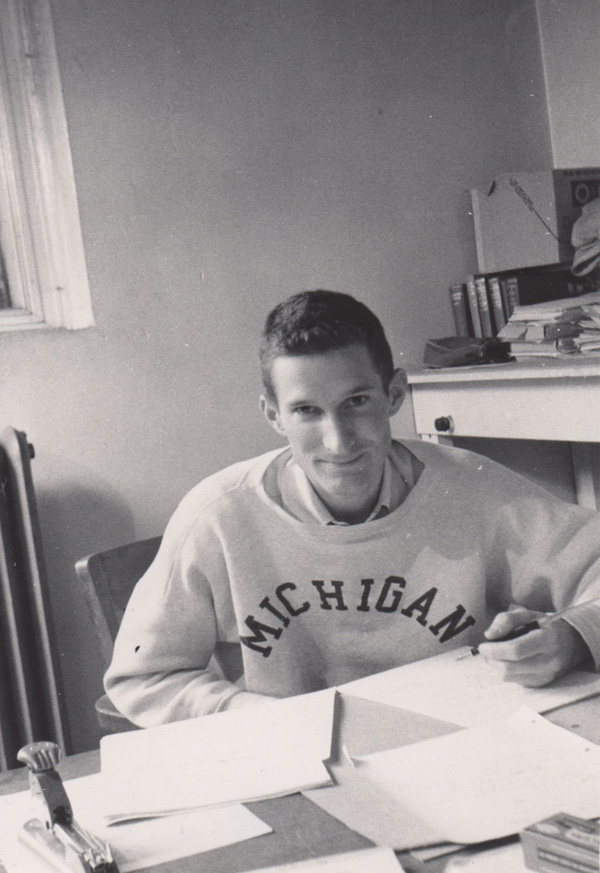
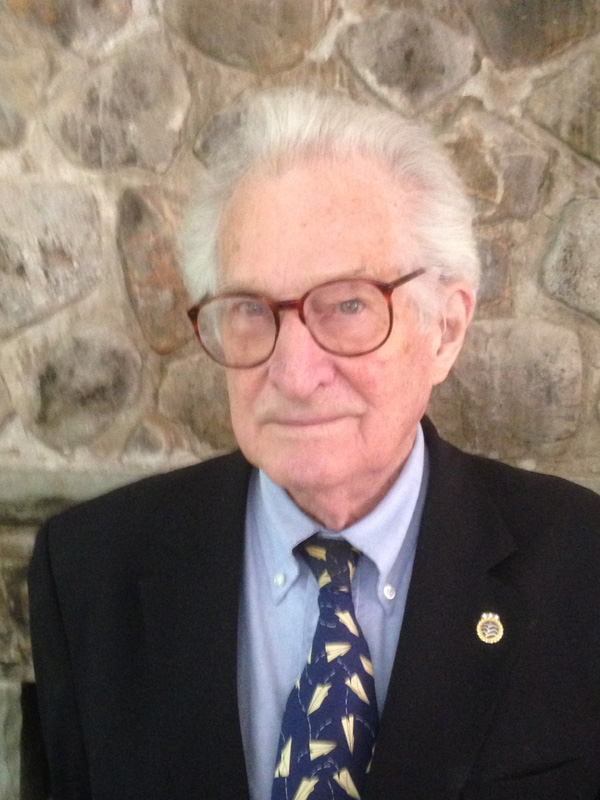
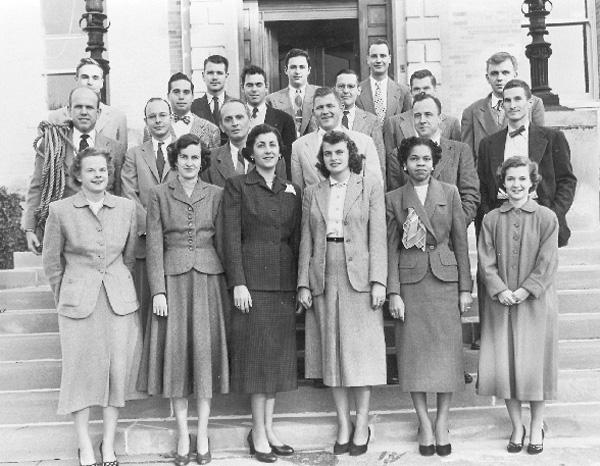
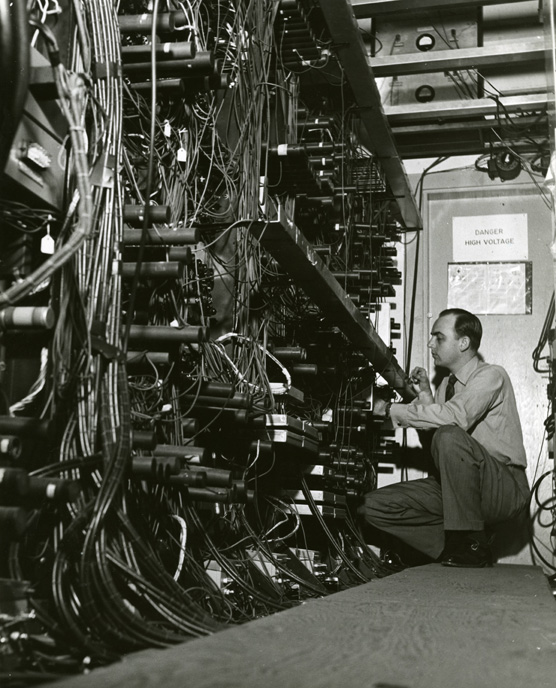
.jpg)
 LA-UR-10-07957.jpg)
